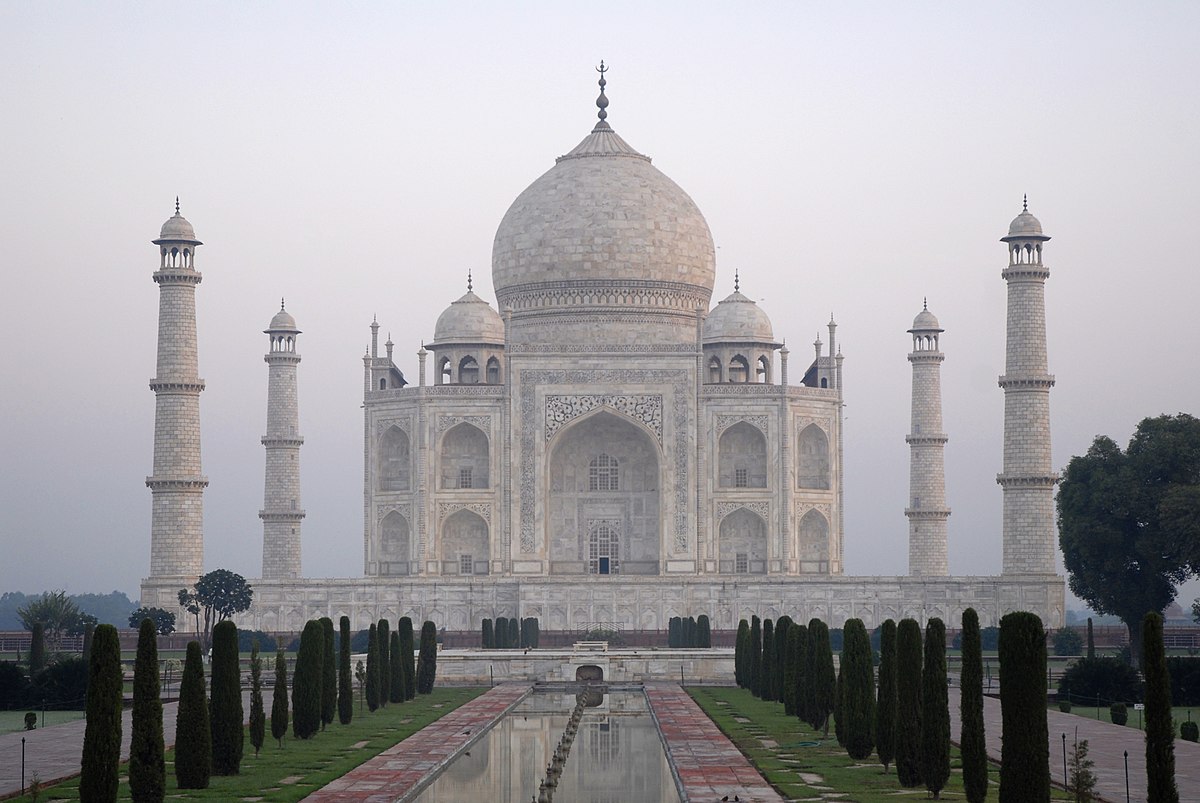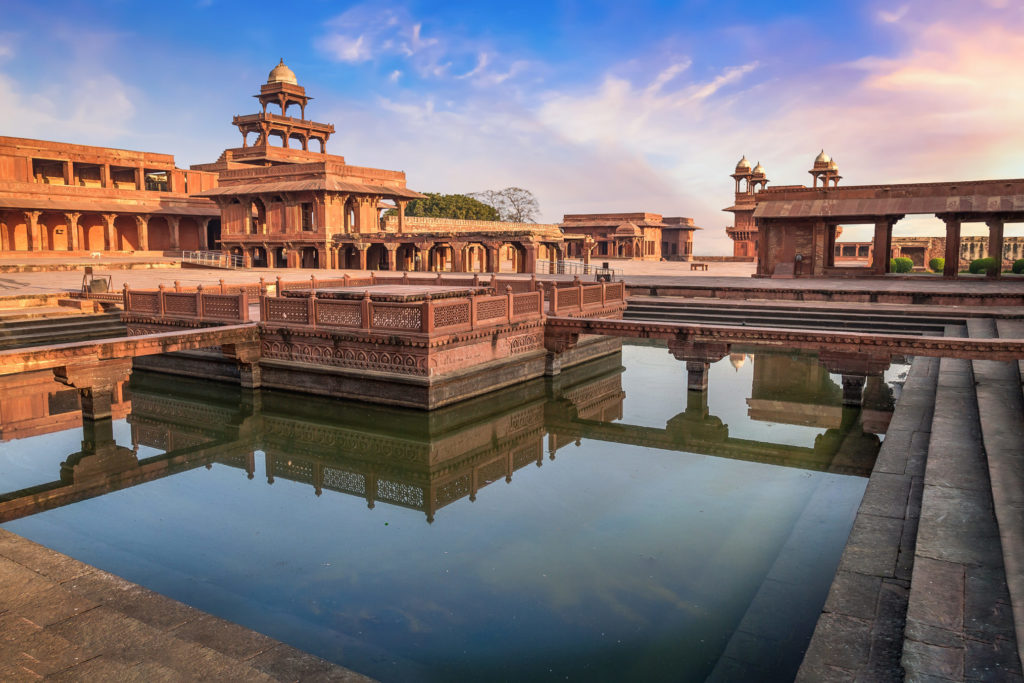Unveiling Mughal Agra: A Journey on the Heritage Walk

Introduction to Mughal Heritage Walk Agra
Embark on a journey through time with the Mughal Heritage Walk Agra, where you will be transported to the majestic era of the Mughal Empire. As you stroll through the historical streets of Agra, guided by knowledgeable locals, you will uncover hidden gems and untold stories that breathe life into the city's rich heritage.
From the grandeur of the iconic Taj Mahal to the intricacies of the lesser-known Mughal structures, every step you take will be a step closer to understanding the opulence and grandeur of a bygone era.
Importance of preserving Mughal legacy in Agra
Preserving the Mughal legacy in Agra is not just about conserving ancient monuments; it is about honouring a legacy that has shaped the cultural identity of India.
The Mughal Heritage Walk plays a crucial role in this preservation effort by not only showcasing the architectural splendour of the Mughal era but also by fostering a sense of pride and reverence among both locals and visitors.
By immersing yourself in the history and heritage of the Mughal Empire, you are not just exploring the past but also contributing to the continuity of a legacy that deserves to be celebrated for generations to come.

Agra Fort
History and architecture of Agra Fort
Explore the rich history and impressive architecture of Agra Fort as you walk through its storied corridors. This UNESCO World Heritage Site stands as a symbol of Mughal grandeur and strategic prowess. Marvel at its intricate design, reflecting a blend of Persian, Indian, and Islamic styles.
Mughal emperors associated with Agra Fort
At Agra Fort, you'll discover the legacies of Mughal emperors like Akbar, Shah Jahan, and Aurangzeb, who shaped the fort's history and significance. Each ruler left behind traces of their reign, from ornate palaces to strategic military structures, offering a glimpse into the Mughal Empire's golden era.
Taj Mahal
Symbol of love: Taj Mahal's history
Let's delve into the romantic history of the Taj Mahal, a symbol of eternal love. Hear the tales of Shah Jahan's devotion to his beloved Mumtaz Mahal, immortalized in this breathtaking marble mausoleum.
Architectural marvels of the Taj Mahal
As you gaze upon the Taj Mahal's ethereal beauty, appreciate the intricate architectural details that make it a wonder of the world. The fusion of Persian, Indian, and Islamic styles creates a mesmerizing masterpiece that will leave you awe-inspired.
Mehtab Bagh
Importance of Mehtab Bagh in Mughal history
Step into the serene beauty of Mehtab Bagh, a place steeped in Mughal history and charm. This exquisite garden, located across the Yamuna River from the Taj Mahal, served as the perfect vantage point for Emperor Shah Jahan to admire the Taj Mahal's splendour.
Scenic views of the Taj Mahal from Mehtab Bagh
As you stand in Mehtab Bagh, gaze across the tranquil waters and behold the Taj Mahal in all its glory. The symmetrical layout of the garden frames the iconic monument, offering a picture-perfect view that captures the essence of Mughal architecture and design. In this idyllic setting, you can truly appreciate the love and artistry that went into creating one of the world's most renowned symbols of eternal love.
The Taj Mahal's pristine white marble shimmers in the sunlight, reflecting the deep emotions and intricate craftsmanship that make it a masterpiece worth beholding. Through the lens of history and the beauty of nature, Mehtab Bagh invites you to immerse yourself in the timeless allure of the Mughal legacy.
Akbar's Tomb
History and Significance of Akbar's Tomb
Step into the powerful aura of Akbar's Tomb, a majestic testament to the greatness of the Mughal Emperor Akbar. This grand mausoleum, located in Sikandra near Agra, stands as a symbol of Akbar's enduring legacy and influence on Indian history. Built in the 17th century, the tomb serves as a tribute to the visionary ruler known for his military conquests, religious tolerance, and progressive policies that shaped the Mughal Empire.
Architecture and design elements of the tomb
As you explore Akbar's Tomb, marvel at the fusion of architectural styles that embody the multicultural ethos of Akbar's reign. The intricate blend of Persian, Indian, and Central Asian influences can be seen in the red sandstone and white marble facade, adorned with elegant carvings and inscriptions from the Quran. The four-tiered minarets and ornate jali screens add a sense of grandeur to the structure, reflecting Akbar's ecumenical vision and inclusive approach to governance.
In the tranquil surroundings of Akbar's Tomb, you can sense the reverence and admiration for a ruler who left a lasting imprint on the tapestry of Indian history. The symmetrical layout of the complex and the lush gardens surrounding the mausoleum create a harmonious balance between human achievement and natural beauty. Each corner of Akbar's Tomb whispers tales of a bygone era, inviting you to immerse yourself in the regal splendour and cultural richness of the Mughal dynasty.

Fatehpur Sikri
Overview of Fatehpur Sikri's Mughal heritage
Step into the enchanting world of Fatehpur Sikri, a historic city built by Emperor Akbar in the 16th century. This UNESCO World Heritage Site showcases the grandeur and architectural brilliance of the Mughal era, offering a glimpse into the opulence and creativity of that time.
As you wander through the sprawling complex, you'll be transported back to a period of cultural flourishing and artistic innovation, where emperors held court and artisans crafted masterpieces that stand the test of time.
Structures and monuments within Fatehpur Sikri
Discover the myriad architectural wonders that adorn Fatehpur Sikri, from the majestic Buland Darwaza to the serene Jama Masjid. The imposing fortifications and intricate palaces reflect the fusion of Hindu, Persian, and Islamic architectural styles, showcasing the eclecticism that defined Mughal aesthetics.
Stroll through the intricately carved halls of the Diwan-i-Khas and marvel at the geometric precision of the Panch Mahal, each structure a testament to the ingenuity and vision of Mughal craftsmen.
Amidst the timeless beauty of Fatehpur Sikri, you'll find a treasure trove of stories and legacies waiting to be explored. The harmonious synthesis of art, culture, and history in this architectural marvel invites you to delve into the past and experience the splendour of Mughal India firsthand.
Jama Masjid
Architectural details of Jama Masjid
Step into the intricate beauty of Jama Masjid within Fatehpur Sikri, a testament to the architectural prowess of the Mughal era. The mosque's red sandstone facade, adorned with white marble inlays and delicately carved details, showcases a harmonious blend of Islamic, Persian, and Indian design elements.
As you step through its grand entrance, the towering central dome and elegant minarets will captivate your attention, inviting you to admire the precision and artistry of Mughal craftsmen.
Cultural and religious significance
Immerse yourself in the cultural and religious significance of Jama Masjid, a place of worship that echoes centuries of devotion and spiritual harmony. The mosque's expansive courtyard, designed for communal prayers and gatherings, fosters a sense of community and unity among visitors.
As you explore the prayer halls adorned with intricate calligraphy and geometric patterns, you'll feel a deep sense of reverence and connection to the rich cultural tapestry of India's past.
Amidst the serene ambiance of Jama Masjid, you'll feel a profound sense of peace and tranquility, experiencing firsthand the spiritual legacy that permeates the heritage of Fatehpur Sikri.
Each architectural detail and symbolic motif within the mosque reflects a deep reverence for tradition and faith, inviting you to partake in a timeless journey of introspection and cultural exploration.
